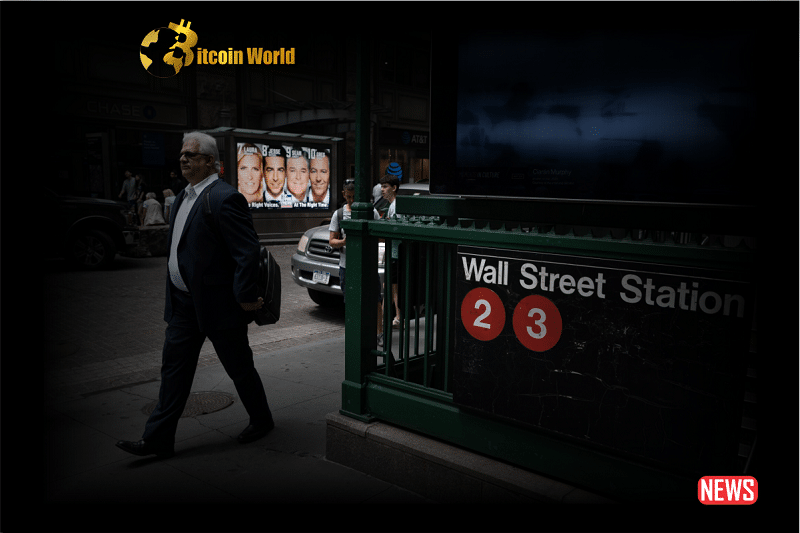In a sharp turn of events, Wall Street experienced a downturn as US stocks closed in the red, driven by a significant drop in the technology-heavy Nasdaq Composite. The market sentiment was influenced by the release of the Federal Reserve’s minutes from its July meeting, which revealed a growing concern among senior officials about “upside inflation risks.” This development has sparked discussions about the potential economic implications.
By the closing bell, the Dow Jones Industrial Average lost 0.52%, settling at 34,765.74 points, while the S&P 500 dipped 0.76% to finish the day at 4,404.33. The Nasdaq Composite took the hardest hit, contracting by 1.15% and ending at 13,474.63. On the foreign exchange front, the dollar remained stable against the pound at 78.55p and experienced a minor 0.01% drop against the euro, trading at 91.91 euro cents. Against the yen, the dollar weakened by 0.05% to JPY 146.28.
IG’s chief market analyst, Chris Beauchamp, noted, “US stocks have finally remembered how to go down in August, as inflation and China fears hit home after a stellar run for the year so far.” Beauchamp pointed out that the current selling trend might continue, especially with the upcoming Jackson Hole symposium where central bankers are expected to discuss their stance on combating inflation.
Fed Minutes Reveal Division Amidst Increasing Inflation Concerns
The release of the Federal Reserve’s minutes, following its decision to raise the federal funds rate by a quarter of a percentage point to between 5.25% and 5.5% in the previous month, highlighted a divided opinion within the Federal Open Market Committee (FOMC). While a majority of officials suggested the need for “further tightening of monetary policy” to address rising inflation with its “significant upside risks,” another faction expressed reservations about the economic outlook.
The minutes underlined that some officials remained cautious about potential economic downturns despite the current resilience of the economy. They also hinted at the possibility of a short-term slowdown in real GDP growth and a slight weakening in the labour market. Oxford Economics lead US economist, Nancy Vanden Houten, pointed out that with the Fed nearing the end of its tightening cycle and rate cuts potentially looming in 2024, discussions about when to scale back the reduction in the Fed’s balance sheet are expected.
Promising Economic Indicators Amidst Market Volatility
Amidst the market volatility, certain economic indicators have displayed resilience. The industrial sector exhibited vigour in July, with a 1% increase in industrial production, driven by heightened utility consumption due to the scorching summer and a resurgence in vehicle output. This growth surpassed the Wall Street Journal’s projection of 0.5% growth and contrasted with the downwardly revised 0.8% decline in June’s figures.
Additionally, the housing sector showcased signs of improvement in July, with a 3.9% surge in housing starts after a notable 11.7% decline in June. Building permits, which point towards future construction activity, experienced a slight uptick of 0.1% in the same month.
Retailers and Tax-Filers Navigate Mixed Market Conditions
In the realm of equities, Target Corporation managed to outperform market expectations, causing its stock to rise by 2.96% after reporting second-quarter earnings. However, the retail giant tempered its optimism by revising down its full-year guidance, adjusting earnings per share expectations to a range of $7 to $8, down from the earlier forecast of $7.75 to $8.75.
TJX Companies, on the other hand, reported a robust second quarter, resulting in a 4.13% jump in its stock. The off-price retail group exceeded market consensus with adjusted earnings per share of 85 cents for the period. Similarly, tax-filing provider H&R Block reported impressive second-quarter earnings, leading to a 9.7% surge in its stock. The company also raised its full-year guidance amidst mixed market conditions.
Wall Street’s recent downturn, spurred by the Nasdaq Composite’s decline and concerns over inflation, highlights the uncertainty prevailing in the current financial landscape. The Federal Reserve’s minutes reflect divisions within the FOMC, with differing views on the course of monetary policy. Amidst the volatility, economic indicators from the industrial and housing sectors offer some positive signals, while retailers and tax filers navigate the market with mixed results. As the markets continue to navigate these intricacies, investors remain attuned to evolving economic data and central bank decisions.














